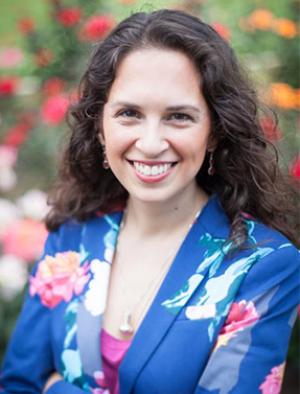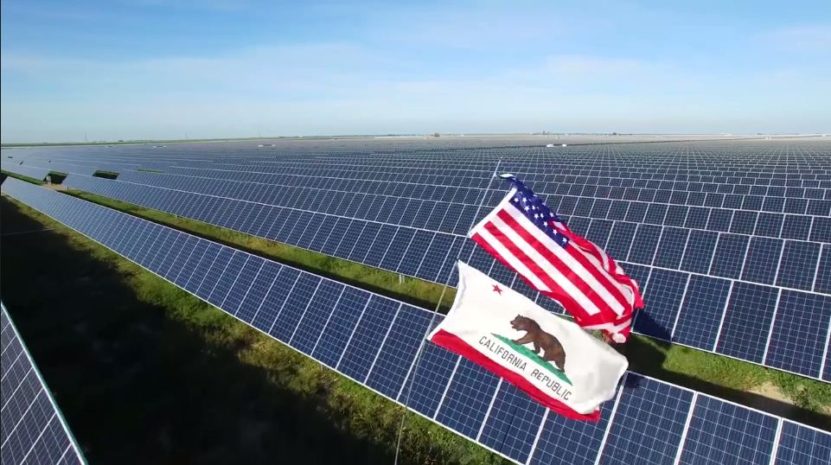Among three pending bills with significant renewable energy market implications in the California legislature is AB 813, which would allow the state to participate in the creation of Western regional transmission organization (RTO), under certain guidelines. The bill is coming to a hearing today in the Assembly Appropriations Committee, and earlier this week we caught up with Environmental Defense Fund’s Lauren Navarro to talk about the details of this effort.
 pv magazine: Can you summarize for our readers how regionalization would support the integration of higher levels of clean energy in California?
pv magazine: Can you summarize for our readers how regionalization would support the integration of higher levels of clean energy in California?
Lauren Navarro: We are at a place right now in California where even at 50% we are turning off solar electricity fairly regularly during certain parts of the year. There are different things that you could do with that electricity. You could use it to power electric vehicles, you could put it into storage, and you should. But ultimately one of the cheapest ways to get run that solar energy is to share it with our neighbors on neighboring grids.
And that not only helps California to get cleaner, by helping us bring on more renewables – it helps other states get cleaner too.
pv magazine: Advocacy organizations including Sierra Club and Clean Coalition have expressed concerns that regionalization could undermine California’s clean energy policies. To you believe that to be the case, and if so, how?
Lauren Navarro: Regionalization done right helps to elevate California policies, not only by enabling us to clean up our grid and bring on higher percentages of renewables, including the 100% clean energy bill, SB 100, that is also planned for this session.
It helps us to export that vision and that view beyond that state. However, it has to be done right and that means making sure that the protections are in place for California and California’s policies. We are not seeing those protections in the bill right now. We want to see those protections and to get it across the finish line.
These amendments are easy. They are things that are already written and can easily be inserted into the policy to address concerns that the state is exporting its control over its resources.
We are here to see that this is done right.
pv magazine: Are any of these amendments currently proposed, and what is the political path to get them into the bill?
Navarro: The amendments are in writing, and the path is rather easy, because they are things that the legislature wants to see. What the legislature is thinking is that they want to see that California policies are protected. And that requires three things: first, to be sure that we have clear protections with the Federal Energy Regulatory Commission (FERC) and to ensure that they can’t trample our energy policy.
And that is already in the bill. It made it into the bill last week, as part of EDF’s efforts and the efforts of Senator Robert Hertzberg , who is passionate about this. Second,another part of ensuring California’s policies is ensuring that California as a state can cause its jurisdictional entities – its IOUs – to pull out of the system if necessary, to protect our clean energy policies and our ratepayers.
Third, we want to be sure that the legislature has a chance to review the governance proposal before it becomes final. It will take some time to do that.
Lastly, we want to be sure that the bucket language, which is in the bill now, can be removed, to ensure that electricity can be traded across state lines: A big clean grid system. That will get the dirtier coal resources and other resources off the grid.
At the same time, we want to be sure that we maximize clean energy jobs in the state. And that can be done. It can be done through a variety of ways, through things that are already on the table. That is an important part of energy policy this year, too.
And a regional grid will help to create jobs in the state. It is an issue that is on our minds and we want to see through.
pv magazine: Is there any tension between getting these changes made to the bill, and getting the bill passed by the end of the session, which has less than three weeks left?
Navarro: Absolutely not, in that they are important and key to the legislature, and in general the legislature wants to see them and to ensure that California’s policies are protected.
That being said, of course we are working against the clock. When you think about the end of the legislative session it is all sort of a blur. We believe we can see these changes. They are easy, and they should be done by the end of the legislative session.
Then we can ensure that California’s policies are protected. And by passing a bill that shows that California’s vision beyond its state borders, we can make the most difference. To be a beacon of hope for clean energy not just to other states, but to the world.
pv magazine: I would argue that California is already doing that. Certainly in New England what California is doing looks great.
When I talk to Clean Coalition, their concern is not only that this could subject California to political interference, but that they think it will be cheaper to balance wind and solar production in-state. Specifically they cited the high cost of building transmission. Does EDF have any analysis or any other basis that supports the contention that regionalization will be the easier and cheaper way to do this?
Navarro: There have been a variety of studies that show that regionalization lowers costs for customers in California and in other states. At the same time, I don’t think that we would say that regionalization is the only strategy that we should pursue regarding integration of renewables. We have been proponents of other strategies that save money, and help to bring more renewables on the grid.
For example, rates that vary by time of day create incentives to generate more electricity from solar in the middle of the day. As well as EV charging programs that help to use excess solar as a battery. I don’t think that anyone thinks that there are enough EVs in California to help soak up all that solar.
However, a regional grids can help to reduce ratepayer costs by $1 billion to $1.5 billion annually. That’s nothing to sneeze at.
pv magazine: You address somewhat the measures in the amendments that would prevent interference by FERC. What are other concrete measures that can be taken to ensure that other states like Wyoming, Utah or Arizona could not use their collective say to water down the overall commitment to renewables in a Western grid?
Navarro: First off, we want to partner first with states like Oregon, Washington and Nevada, that share our clean energy goals and potential. Eventually, we would like states like Wyoming and Utah to get on the clean energy bandwagon, but we haven’t seen that yet.
So right now I think the premier focus is Oregon, Washington and Nevada. If you create a foundation with those states that have like-minded interests, you are able to create a foundation of this new RTO that is greener and cleaner . So that is certainly something that we want to see.
We underline that by having clear provisions in the bill that, while we can’t control what the RTO does, we can’t say what its policies are going to be, we can make California’s position clear that if its rights are trampled we are able to pull out, and to join a new entity or create a new entity.
We need to clearly say in the bill that California has the right to pull out its jurisdictional entities – its IOUs – if its policies are violated. And that is something that we would like to see in this bill now.
This content is protected by copyright and may not be reused. If you want to cooperate with us and would like to reuse some of our content, please contact: editors@pv-magazine.com.









Navarro does not respond adequately to transmission costs and governance issues. Not only is it costly to build transmission lines (much less decide whether CA will pay its “share” by state, ratepayer population, load, etc.), we know that long distance transmission is less efficient and increases insecurity with respect to cyber and other attacks and resiliency to climate change impacts.
A preliminary association with Oregon and Washington is questionable, too. CA can already access the power markets in these like-minded states, and large hydro from the Northwest even now raises questions about sustainability, given CA’s RPS definitions and ever growing local and regional conflicts over water.
Finally, it should be noted that Regionalization, as proposed, supports corporate and large business interests (including related labor unions) over local economic development and community involvement. The argument of cost-savings for the rate-payers should always be viewed with skepticism when those rate-payers have little or no role in determining policy, all the more so when investor profits from what would necessarily be large construction outlays leave the state instead of remaining at home.
Hello Ms. Ichinose,
Thanks for your thoughts on this issue. In terms of your contention that California can already access the power markets in the states, the devil here is in the details. The current system of oft-inflexible bilateral contracts between IOUs and generators in those markets has been identified by a number of stakeholders as one of the biggest obstacles to integrating more renewable energy, and the Energy Imbalance Market barely scratches the surface of fixing this, as it does not operate in the day-ahead market.
We explored these issues in detail in the July print edition of pv magazine: https://pv-magazine-usa.com/2018/07/30/californias-solar-and-wind-integration-challenge/